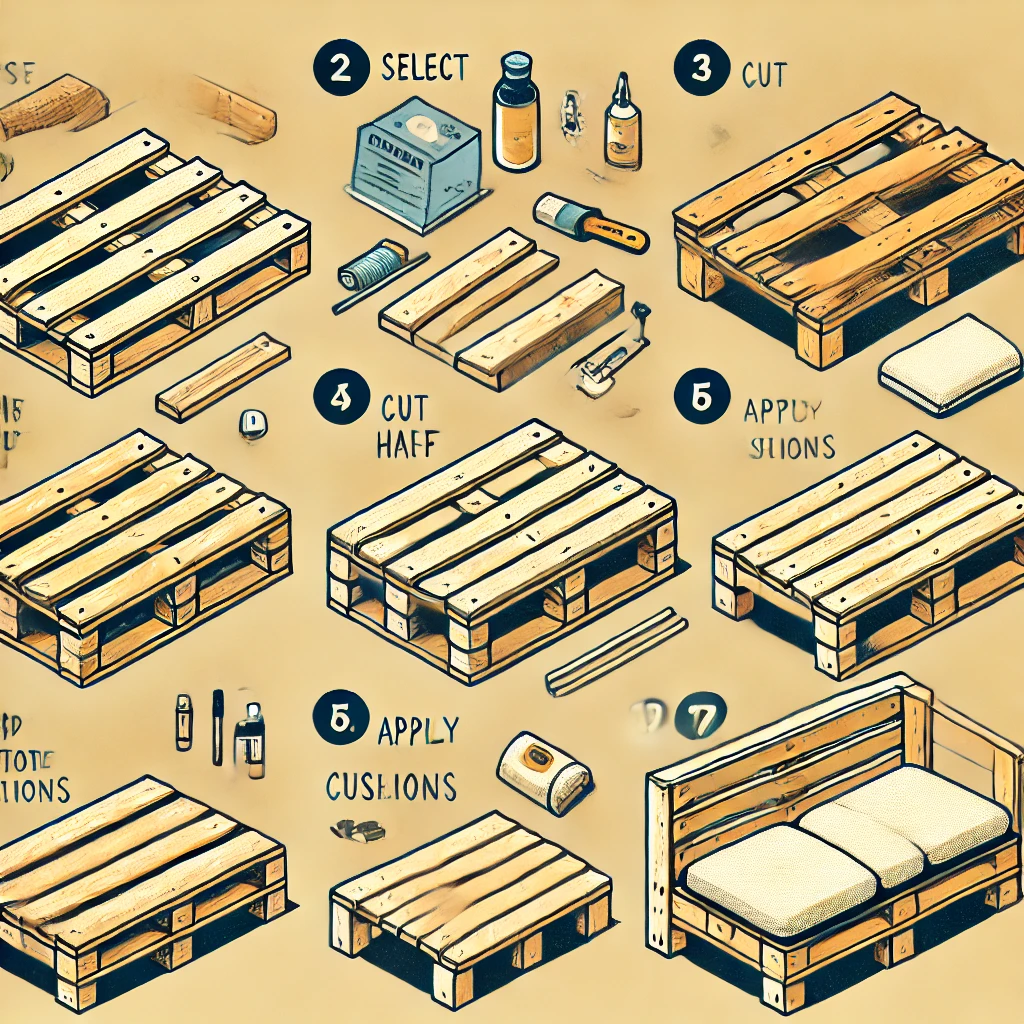These days, you can hardly browse the internet without coming across incredible DIY projects made from wooden pallets. The widespread availability of these discarded shipping materials makes them an excellent resource for creating rustic and budget-friendly furniture. Since many pallets are weathered from use, they naturally add a unique charm to anything crafted from them.
Why Pallets Are a Great Material Choice
Pallet woodworking isn’t just a trend in the U.S.—it’s popular worldwide. In places like Mexico, for example, pallets are commonly repurposed into fences and other practical structures.
One of the biggest advantages of using pallets is their affordability and durability. Many are made from oak, a strong and expensive hardwood, yet they can often be acquired for free or at a very low cost. While new oak pallets can be costly, used ones are often discarded by businesses and are up for grabs if you know where to look.
Additionally, repurposing pallets is an eco-friendly way to reduce waste and create sustainable furniture. By giving these wooden structures a second life, you’re contributing to a greener planet while saving money on materials.
Where to Find Free or Cheap Pallets
Getting pallets without spending much money is possible if you know the right places to check. Here are some of the best ways to source them:
- Local Businesses: Many stores receive shipments on pallets and may not have a recycling system in place. Furniture stores, small warehouses, and appliance stores are good places to ask.
- Pallet Dealers: Some companies buy and resell used pallets. If you’re willing to take slightly damaged or imperfect pallets, you can often get them at a discount.
- Craigslist & Online Listings: Occasionally, people give away pallets for free—just for someone to haul them away.
- Construction Sites & Factories: These places often have pallets they no longer need. Always ask before taking them to avoid any issues.
- Networking with Local Businesses: Establishing a relationship with store managers or warehouse owners can help you secure a steady supply of free pallets.
Safety Tips for Working with Pallets
Before using pallets in your projects, keep these safety tips in mind:
- Check for Chemical Treatment: Some pallets are treated with chemicals that can be harmful. Look for heat-treated (HT) pallets, which are safe for DIY projects.
- Inspect for Damage: Avoid pallets with excessive splinters, mold, or rot.
- Wear Protective Gear: Use gloves, goggles, and a mask when cutting, sanding, or staining pallets.
Turning Pallets into Furniture

With a little creativity and effort, pallets can be transformed into functional and stylish furniture. Here are three primary ways to modify them:
- Cutting Down Pallets – Many projects, like benches or chairs, require smaller sections. Cutting a pallet in half can create the perfect size for seats or backs.
- Adding Extra Boards – If you’re making a tabletop and need a solid surface, you may need to fill in the gaps between the slats.
- Disassembling for Lumber – If you prefer a more polished look, breaking down pallets into individual planks gives you flexibility for different woodworking projects.
DIY Pallet Furniture Ideas
Pallets are perfect for crafting sturdy and rustic furniture, especially for outdoor spaces. Here are a few easy and functional projects:
1. Vertical Gardens
A vertical garden made from a pallet is a great way to maximize space while adding a decorative touch to your patio or backyard. Simply attach additional boards inside the pallet’s openings to create planter boxes, then stand it upright and secure it against a wall or fence.
2. Storage Shelves
Cutting a pallet in half horizontally can create instant shelving units. Stack them with cinder blocks for easy storage, or attach them to the wall with the support beams acting as shelves. If you want traditional bookshelves, dismantle the pallet and rebuild it to your preferred dimensions.
3. Benches & Outdoor Seating
The simplest bench design involves stacking pallets against a wall and adding pillows for comfort. For a more refined look, add legs made from salvaged pallet wood and connect multiple benches to form an outdoor seating area.
4. Pallet Chairs
Chairs follow a similar concept to benches but typically require cutting the pallet into quarters. This allows you to create a seat and backrest. Use the leftover wood for reinforcing the structure or additional projects.
5. Custom Tables
While stacking two pallets can create an instant table, a more polished approach involves removing the slats and reattaching them without gaps. You can also experiment with creative designs, such as arranging boards in patterns or using contrasting wood tones.
For a modern twist, consider using pallet wood to make a coffee table with hidden storage or a dining table with a glass top for a more refined look.
Finishing Touches: Sanding, Staining, and Sealing
To enhance the durability and aesthetics of your pallet furniture, follow these steps:
- Sanding: Smooth rough edges and surfaces to prevent splinters.
- Staining or Painting: Apply a wood stain or paint to match your décor.
- Sealing: Use a protective sealant, especially for outdoor furniture, to prevent moisture damage.
Monetizing Your DIY Pallet Creations
If you enjoy working with pallets, consider turning your hobby into a side hustle. Handmade pallet furniture is in high demand, and you can sell your creations through:
- Etsy: A great platform for selling custom rustic furniture.
- Facebook Marketplace & Craigslist: Perfect for local sales and quick transactions.
- Flea Markets & Craft Fairs: Great places to showcase your work to potential buyers.
- Custom Orders: Offering personalized designs can attract more customers.
Start Your Next DIY Pallet Project
Wood pallets offer endless possibilities for DIY enthusiasts. With a bit of time and effort, you can turn them into stylish and functional furniture at little to no cost. Whether you’re making a vertical garden, a rustic bench, or a custom table, pallet wood is an excellent material to work with. Get creative and start building!




